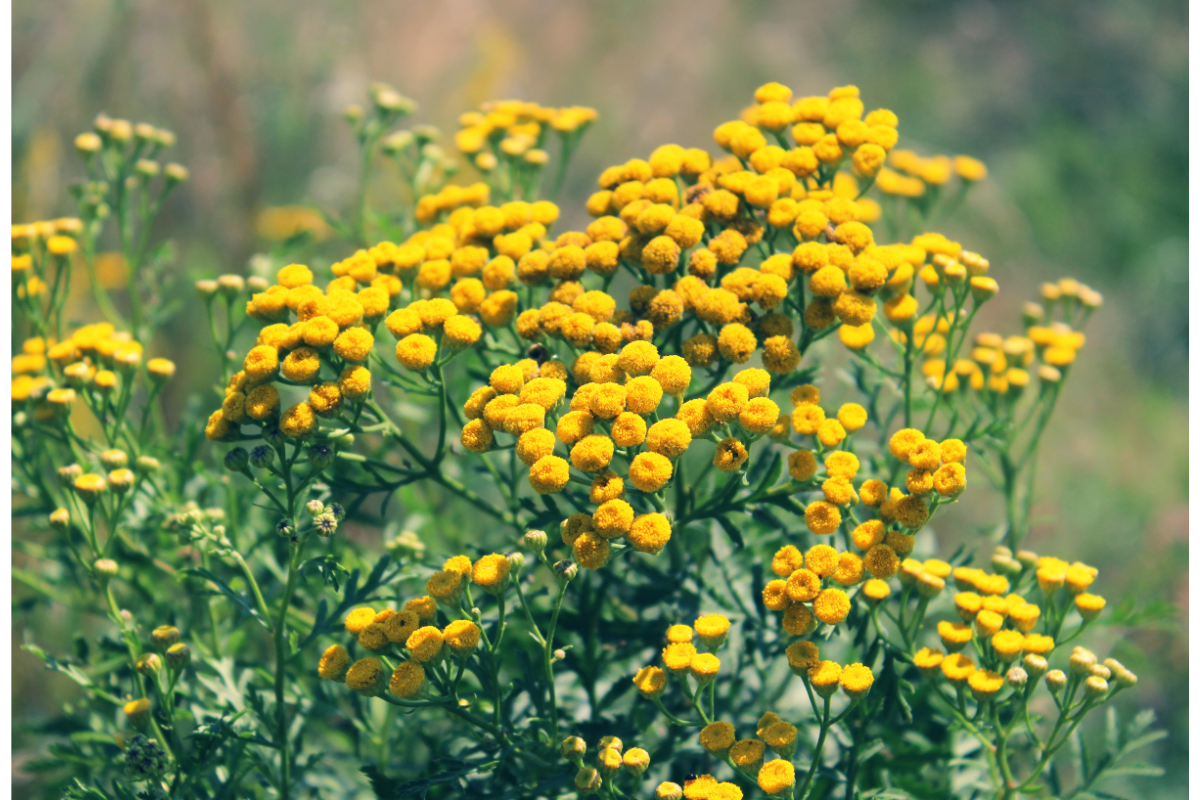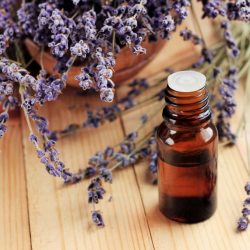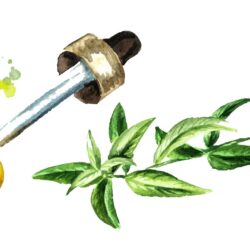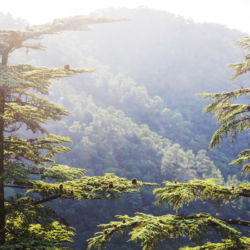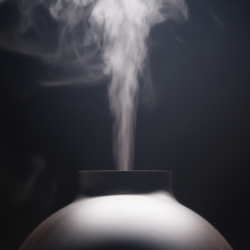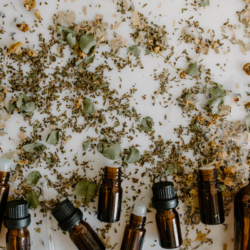The fascinating world of essential oils is full of botanical treasures with amazing properties. Among them, Annual Tansy, also known as Blue Tansy (Tanacetum annuum L.), stands out for its unique characteristics and therapeutic potential. Let’s delve into the enigma of this multi-faceted essential oil.
Originating in mid-European regions, Blue Tansy offers much more than its floral beauty. Its botanical attributes, complex chemical composition and varied uses make it an exceptionally interesting plant. But beware: behind its benefits lie a number of aspects you need to be aware of if you want to use it safely.
In this article, we explore in detail the botanical characteristics of Blue Tansy, its chemical composition, its traditional and modern uses, and the precautions to be taken. Get ready to dive into the enchanting world of Annual Tansy essential oil and discover how it can enrich your life in surprising ways.
What are the characteristics of Blue Tansy?
Tansy, whose botanical name is Tanacetum annuum L., belongs to the Asteraceae family. The flowering aerial parts produce the essential oil.
What are its botanical attributes?
Tansy is a herbaceous perennial with an aromatic structure. Its upright stems can reach a metre in height. Tansy leaves are pennatilobed and have toothed segments. Inflorescences are in the form of corymbs of capitula, made up of identical yellow florets. Pollination varies between entomogamy and autogamy, and the flowering period extends from July to September.
Chemically, Tansy has a variety of chemotypes, defined mainly by their dominant olfactory component. These include camphor, borneol and cineol chemotypes, among others. It should be noted that the plant contains neurotoxic molecules in high doses, with psychoactive and laxative effects, accompanied by stomach upsets.
As far as reproduction is concerned, Tansy is hermaphroditic. The fruit is an achene and its spread is mainly anemochorous.
How is it grown?
As for its habitat and distribution, Tansy prefers mesoxerophilous perennial wasteland. Its range is predominantly medio-European. Originally Eurasian, its range has been reduced in fields subjected to intensive agriculture and in areas treated with weedkillers. Nevertheless, it remains prevalent on fallow land, roadsides and watercourses.
Research was carried out at the beginning of the 21st century to assess the potential of various Tansy genotypes in the fields of green chemistry, pharmacology and biopesticides. These studies involved samples collected in Canada (Richters and Goldsticks) and Norway (Steinvikholmen, Alvdal and Brumunddal). The researchers focused their efforts on optimising biomass and yields of high-quality essential oil.
There were notable differences in essential oil yields between the Canadian and Norwegian genotypes. Canadian genotypes yielded between 42.1 and 44.5 L/ha. Norwegian genotypes showed yields ranging from 21.0 to 38.4 L/ha. These initial data suggest that Tansy genotypes could be classified into several chemotypes. These include those containing cineole, bornyl acetate, borneol and α-terpineol. One specific chemotype, called Richters, is distinguished by an average concentration of (E)-chrysanthenyl acetate of over 40% in the essential oil extracted from its leaves and flowers.
These results could have major implications for the industrialisation of tansy, particularly in the fields of green chemistry and the production of biopesticides, as well as for pharmaceutical applications.
What are the uses of Tansy essential oil?
According to decree no. 2007-1198 of 3 August 2007, essential oils on list B must only be dispensed on presentation of a medical prescription. They may only be supplied to the pharmaceutical industry, as their potential undesirable effects (neurotoxicity, causticity, carcinogenicity, etc.) outweigh the expected therapeutic benefits.
What is the composition of this essential oil?
Tansy, although beneficial in low doses for certain applications, is toxic and psychoactive in high concentrations. This plant is rich in a variety of chemical compounds such as malic, citric, tartaric and oxalic acids. It also contains tanacetene, which gives the plant its bitterness, as well as flavonoids, trans-thuyone and trans-chrysantenyl acetate.
Several of these compounds have already been identified as biologically or pharmacologically active. For example, camphor acts as an insect repellent, chamazulene has antioxidant properties, and 1,8-cineole is also an effective insect repellent. Other compounds such as bornyl acetate, p-cymene and γ-terpinene also have insect repellent properties.
In terms of its terpene composition, Tansy has a fairly wide range:
- Sabinene: 6 to 26
- β-Myrcene: 4 to 16
- Camphor: 7 to 15
- Chamazulene: 2 to 15
- β-Phellandrene: 4 to 10
- β-Pinene: up to 10
These varied compounds make Tansy a plant with many potential applications, but they also require careful and informed use to avoid toxic effects.
How does it work?
Annual Tansy essential oil is characterised by a high concentration of various active molecules, in particular chamazulene, sabinene, myrcene and camphor. These compounds give the oil a range of specific therapeutic properties, which are detailed below:
- Anti-inflammatory properties: Attributed mainly to chamazulene, these properties help to limit inflammatory manifestations such as redness and sensations of heat. Sesquiterpenes and terpenes help to modulate the body’s immune response to external or internal aggression.
- Antihistamine action: Chamazulene also plays a role in modulating allergic reactions. It helps to reduce symptoms such as sneezing, runny nose and eye irritation, making allergic episodes less frequent and less disabling.
- Antipruritic effect: This essential oil effectively combats itching or pruritus, thanks in part to its antihistamine action.
- Soothing, sedative and hypotensiveproperties: The sesquiterpenes contained in the oil have a soothing effect on the nervous system. This reduces anxiety and improves sleep quality. These compounds also help to reduce blood pressure.
- Phlebotonic effect: Annual Tansy oil stimulates the tone of the venous walls and encourages better blood circulation.
Due to its complex phytochemical profile and associated biological actions, Annual Tansy essential oil requires precise, controlled use to optimise its therapeutic benefits while minimising the risk of side-effects.
What are its indications?
Annual Tansy (Tanacetum annuum) essential oil has a spectrum of pharmacological activities including anti-inflammatory, antihistaminic, antiphlogistic and antipruritic effects. Although traditionally used against intestinal verminosis, warts and various external parasites (such as scabies, lice and fleas), the use of this oil for deworming applications is currently not recommended. This warning is mainly due to the presence of beta-thujone. This is an isomer of thujone, which has neurotoxic, epileptic, convulsive and abortifacient properties. In high doses, this compound can also induce hallucinations and feelings of disinhibition.
Phytochemically similar to pyrethrum, Annual Tansy also acts as an insect repellent, repelling various harmful insects such as ants, moths, fleas and bedbugs. It is also effective against specific agricultural and horticultural pests, such as the Colorado beetle, the obliquebanded leafroller and the Bombyx disparate, the latter being considered particularly invasive in certain leafy forests in the northern hemisphere.
In addition, this essential oil can be used for the symptomatic treatment of a number of skin and systemic ailments. In particular, it can be used for skin and respiratory allergies, asthma, rosacea, rheumatism, hypertension, neuralgia, sciatica and varicose veins.
However, it must be stressed that Annual Tansy essential oil must be used with caution and under competent medical supervision, due to the risks associated with its bioactive components. A rigorous analysis of the benefits and risks is therefore necessary to optimise its therapeutic use.
How is tansy used?
In the rest of this article, let’s delve into the essential details of how to use Blue Tansy safely and effectively.
What is the dosage?
With its complex bioactive profile, Annual Tansy essential oil needs to be used with care and attention to detail. The recommended route of administration is via the skin, due to its irritability to the respiratory tract and its neurotoxic potential. Children under the age of 6 should not use it, and a competent doctor should approve its use, particularly because of its potential effects on the endocrine system.
To optimise application to the skin, dilute Annual Tansy essential oil in a soothing, regenerating vegetable oil such as Calendula oil. A typical dilution would be 2 drops of Annual Tansy essential oil for 10 drops of Calendula vegetable oil. This preparation can then be massaged into the affected area.
It is also possible to combine this essential oil with other oils to create therapeutic synergies. Caution should be exercised due to the cortisone-like effects and risks associated with the various bioactive components of the oil. Thus, a rigorous assessment of the therapeutic benefits versus the potential risks is crucial in determining the suitability and appropriate dosage in specific treatment protocols.
What are the precautions for use?
Annual Tansy (Tanacetum annuum) essential oil has a wide range of pharmacological properties, as well as specific contraindications and precautions for use. Its use therefore requires a supervised approach and in-depth knowledge of its interactions and potential side-effects.
For prolonged use of this essential oil, prior validation by a qualified therapist is essential. Although it can be used by specific groups such as babies, children and pregnant women, it should only be used with extreme dilution and under strict medical supervision.
Annual Tansy essential oil contains constituents which are irritating to the skin. It is therefore essential to dilute it in a vegetable oil before applying it to the skin. A dilution ratio of 20% essential oil to 80% vegetable oil is generally recommended.
Oral use is extremely rare. Because of its potentially harmful effects, a doctor’s prescription is required for its use.
Chamazulene, one of the constituents of this oil, affects the pituitary-ovarian axis. It could lead to a shortening of the menstrual cycle. In cases of hormone-dependent cancer (breast, prostate, uterus), the oil is therefore contraindicated.
Ingestion of this oil is potentially fatal and can have harmful effects on organs. Particular care must therefore be taken to avoid accidental ingestion. In the event of exposure, immediate measures, such as contacting a poison control centre or washing the skin thoroughly, are imperative.
In short, Annual Tansy essential oil is both a powerful and delicate substance. To ensure it is used safely, use must be rigorously controlled, and the precautions for use and contraindications must be scrupulously observed.
What is the history of Tansy?
To avoid confusion with common tansy, the plant previously known as Tanacetum annuum was renamed Vogtia. It is also known as blue tansy. It shares few characteristics with common tansy, with the exception of the flower heads. The term “Moroccan camomile” is also a source of confusion. It does not refer to true chamomile varieties such as Roman chamomile or matricaria. Because of its indigo-coloured essential oil, a characteristic shared with matricaria, blue tansy is sometimes called “blue camomile”. These misnomers give rise to inaccurate mental images, such as seeing annual tansy as a simple daisy.
Blue tansy is a plant typical of the western Mediterranean. It is particularly common in Morocco, growing near towns in the north of the country (Larache, Tangier, Tétouan, Assilah, etc.), as well as in the Gharb plain in central Morocco. It can also be found at higher altitudes, in the Middle Atlas, near the town of Azrou. Blue tansy is also very common on the Andalusian coast, sometimes venturing as far as Portugal.
In France, Charles de l’Écluse recorded this plant more than four centuries ago. Tansy is now rare in the Provence-Alpes-Côte-d’ Azur region , and is on the red list of critically endangered species. A similar misfortune almost befell Morocco. Over-harvesting led to the rarefaction of this plant. Organic farmers have now reintroduced the plant as part of a sustainable farming policy.
In the 1930s, Botan dared to claim that this plant had no medicinal use. In fact, it is very similar to matricaria! Obviously, the situation is quite different. He was probably unaware of the existence of its essential oil, for example.
References:
https://www.tandfonline.com/doi/abs/10.1080/10412905.2000.9712058

